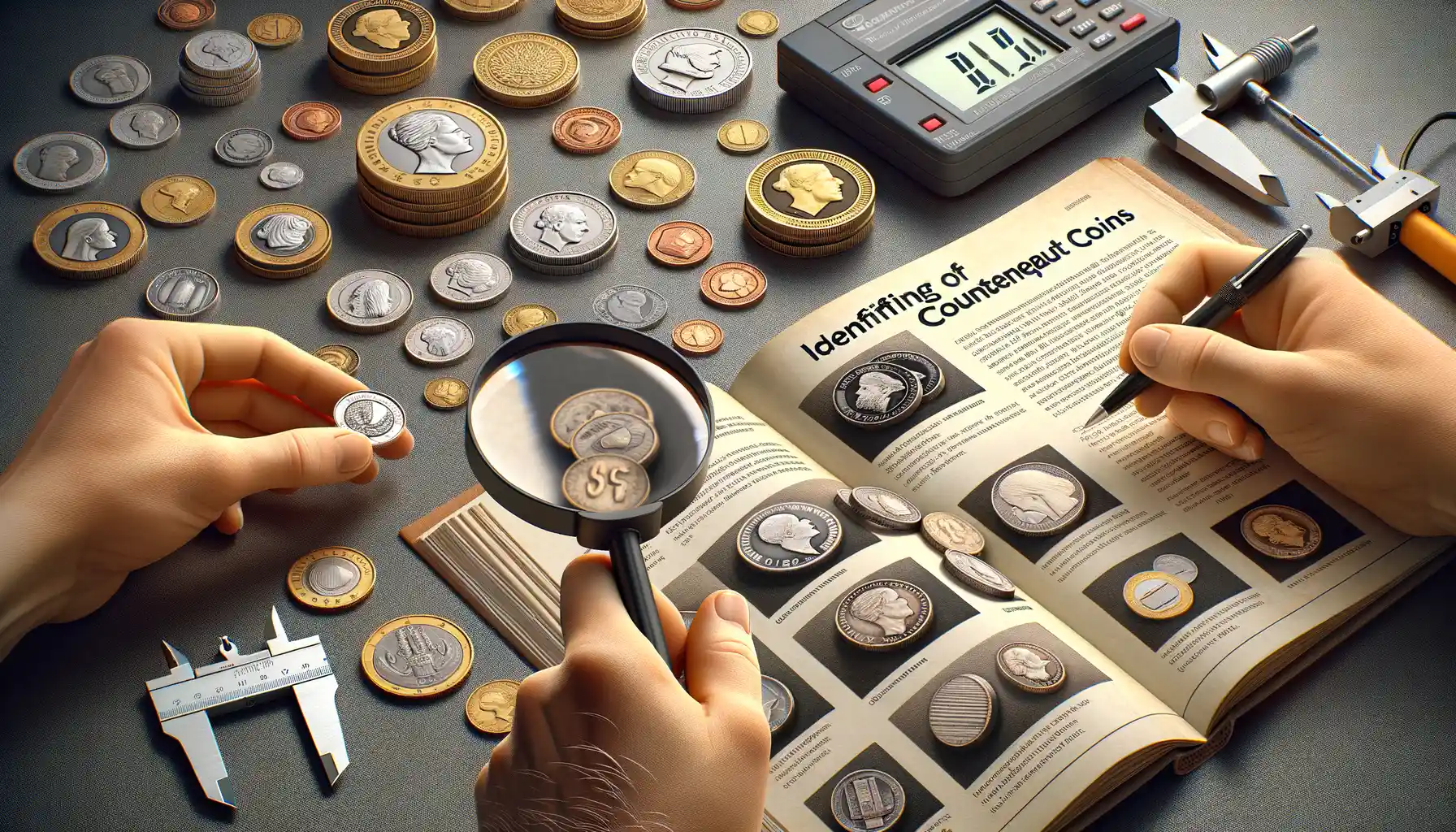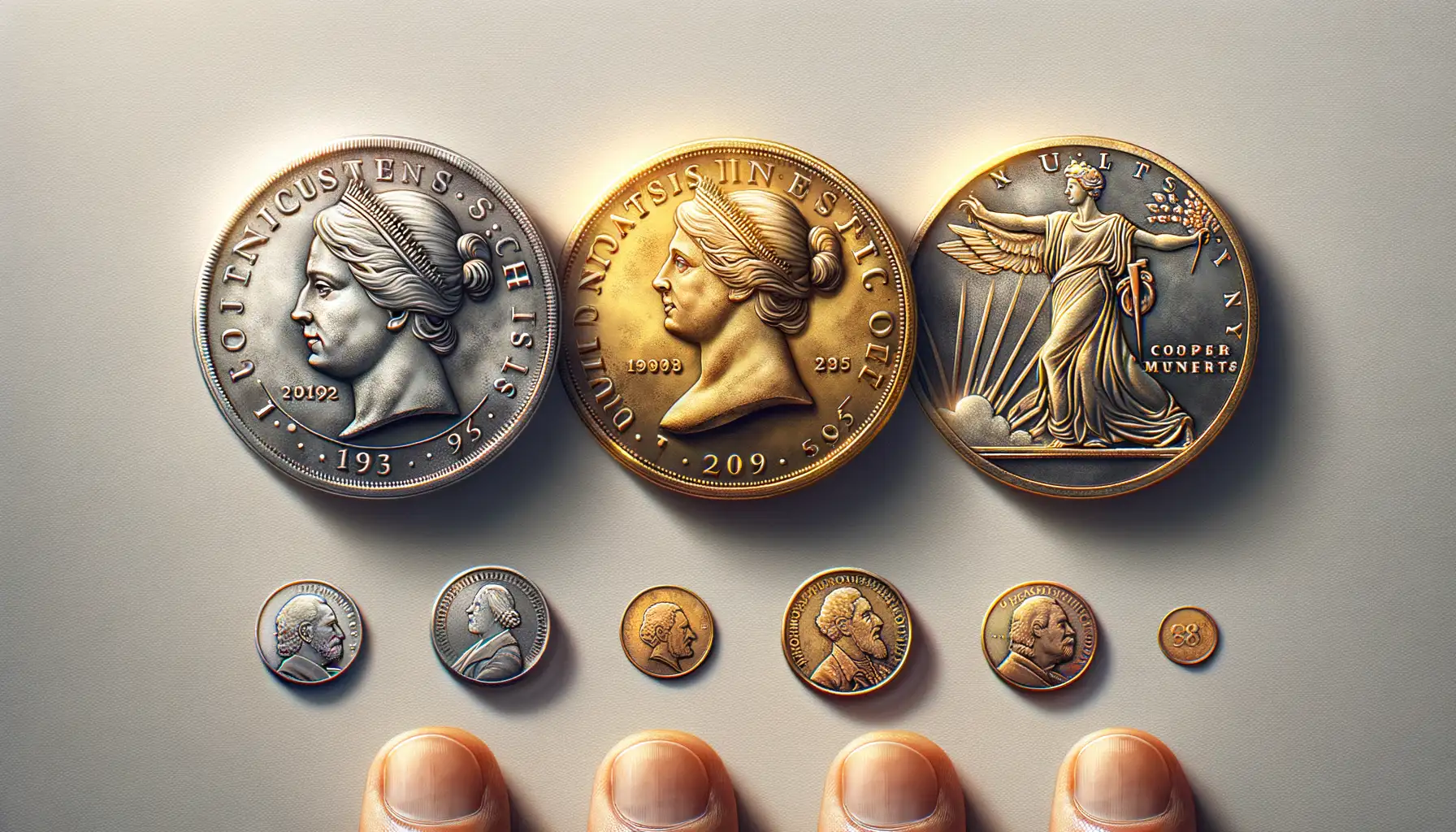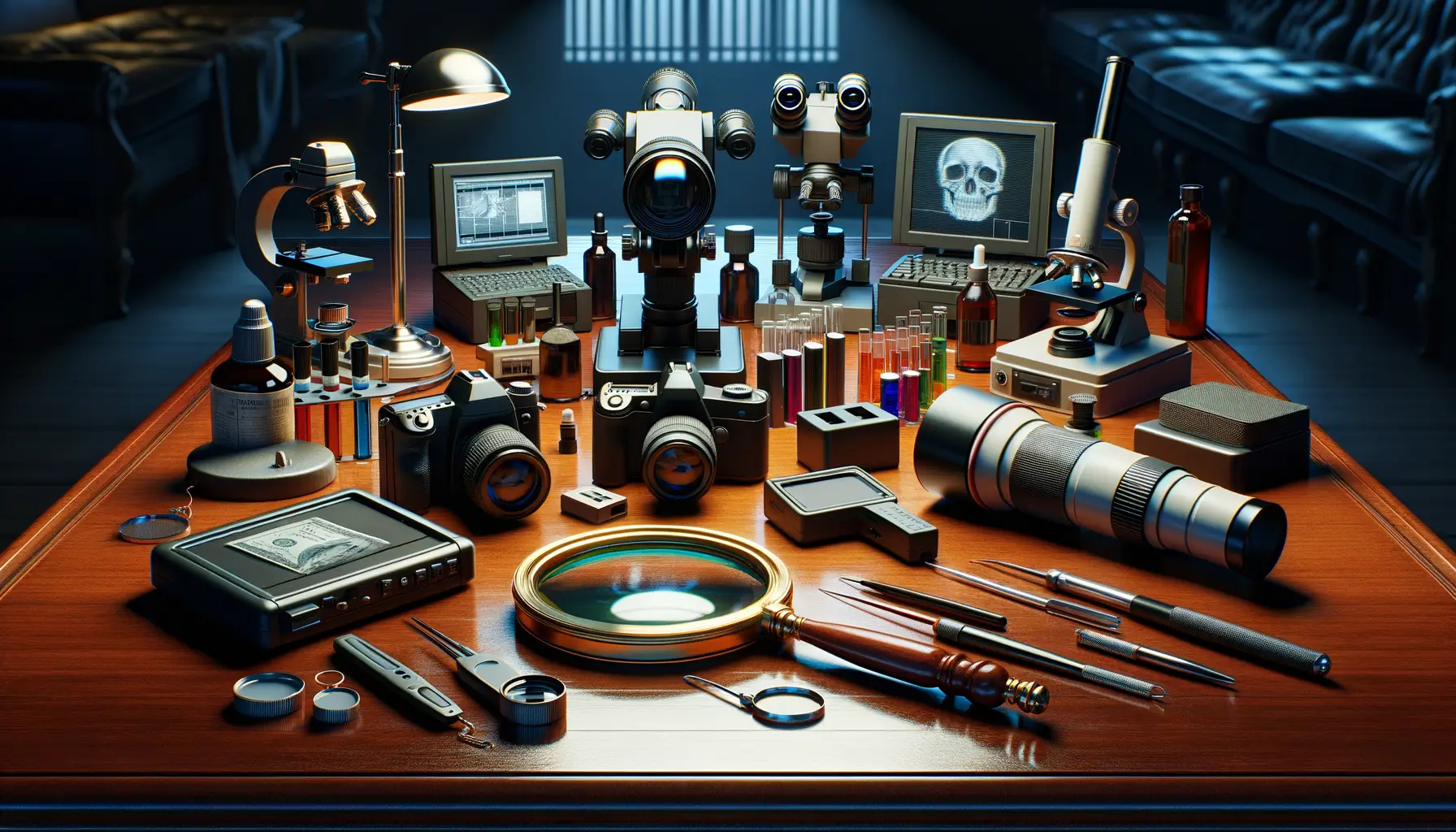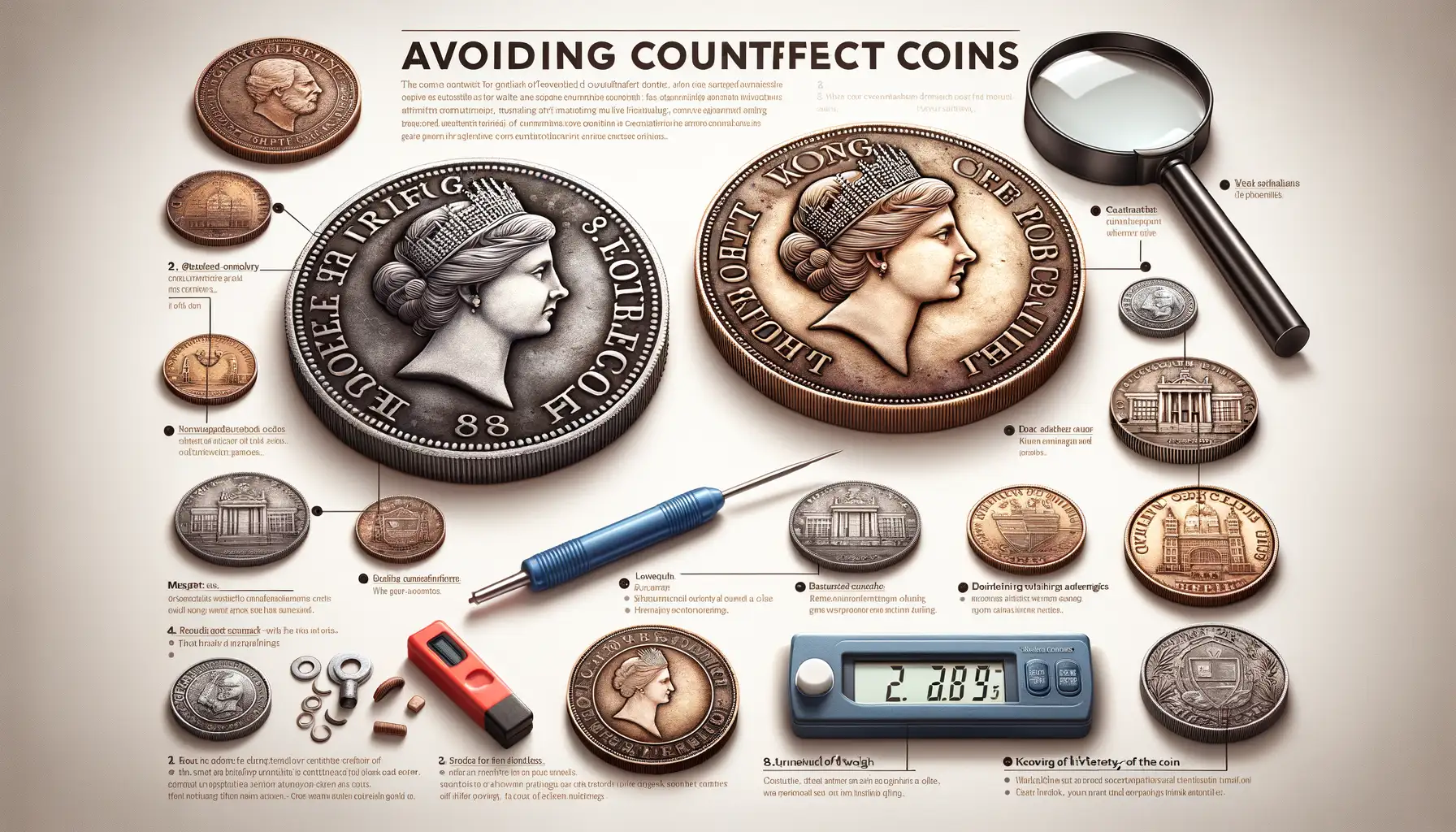Understanding the Basics of Counterfeit Coins
What Makes Counterfeit Coins So Tricky?
Let’s face it—counterfeit coins are like wolves in sheep’s clothing. They can look eerily similar to the real deal, but beneath their shiny exterior lies something far less valuable. Why are they so deceptive? Because counterfeiters have evolved their tricks over centuries, using methods that fool even sharp-eyed collectors. From fake patinas that mimic age to perfunctory designs that almost mirror a genuine coin, spotting these imposters is no walk in the park.
But here’s the good news: understanding the basics of how counterfeits are made can strengthen your ability to spot them. Common tactics include using cheaper metals like zinc or lead, coating them with a thin layer of silver or gold. Sometimes, scammers create molds from authentic coins to replicate details, which sounds clever, but it often produces telltale imperfections. Knowing this puts the power right back in your hands.
The Common Clues You Shouldn’t Ignore
Certain red flags can help you separate fake coins from genuine ones. If you’re just beginning, keep an eye out for these signs:
- Weight irregularities: Authentic coins are struck to precise weights. A difference of even a gram could be a major warning sign!
- Surface texture: Fake coins often suffer from odd, grainy finishes—no match for the smooth elegance of a real coin.
- Details lacking crispness: Letters that look “mushy” or blurred edges on designs might mean you’ve got a counterfeit in your hands.
No one wants to invest in a beautiful coin collection only to discover it’s riddled with fakes. With a little vigilance and some curiosity, you’ll soon learn to read coins like a pro storyteller interpreting ancient scripts.
Techniques for Identifying Counterfeit Coins

Spotting the Telltale Signs
Picture this: you’re holding a gleaming coin in your hand, but something feels… off. Is it your imagination? Or is it a cleverly disguised fake? Knowing how to identify counterfeit coins is like having a treasure hunter’s sixth sense—it’s thrilling and rewarding when you get it right! Begin by scrutinizing the **design details** of the coin. Counterfeiters often falter when it comes to fine lines or intricate patterns. A genuine coin will have sharp, clean designs that are difficult to replicate.
Another giveaway? The sound test! Genuine coins have their own distinct “ring.” Gently drop the coin onto a hard surface—if it produces a dull thud instead of a crisp, metallic tone, your suspicions may be correct. And don’t underestimate the power of touch. Authentic coins feel solid and carry the proper weight. If the coin seems too light or heavy, it might be trying to fool you.
Here’s a quick checklist:
- Examine edges for irregularities or inconsistent milling.
- Check for mismatched fonts or misplaced engravings.
- Use a magnet—most real coins aren’t magnetic!
Trust your instincts and tools—you’ve got this!
Reading Between the (Coin) Lines
Ever noticed how simple changes in texture can reveal hidden secrets? Look closely at the coin’s surface under a magnifying glass. Genuine coins often have a smooth consistency, while counterfeits might showcase tiny bubbles, uneven surfaces, or strange ridges. Another pro tip: compare the coin with another authentic one from the same series. Counterfeit coins can struggle to nail down subtle differences in color or luster—especially on aged coins.
Finally, take note of emotional cues. Yes, emotions have a role! If a deal seems “too good to be true,” or if you’re feeling rushed, pause to investigate. Your gut instinct is an underrated tool in spotting fakes!
Common Types of Counterfeit Coins

Tricky Replicas That Pass as the Real Deal
When it comes to counterfeit coins, fraudsters have mastered the art of deception—and they’re not playing fair. Some fake coins are so convincing they’d fool even seasoned collectors on a quick glance. A few types to watch out for? Here’s the scoop:
- Cast Counterfeits: These are made by pouring molten metal into pre-formed molds. They might look okay at first, but close inspection often reveals their flaws—think rough surfaces or uneven edges.
- Plated Counterfeits: Sneaky and dangerous, these are base metal coins coated with precious metals like gold or silver. Scratching beneath the surface (literally!) can expose their true identity.
- Altered Coins: Ever seen a coin that looks authentic but feels “off”? Scammers sometimes modify genuine coins by altering dates, adding mint marks, or removing features to create rare varieties.
The Mystery of Modern Counterfeits
In today’s world, the game has leveled up. High-tech laser engraving produces counterfeits almost indistinguishable from originals. And don’t get me started on digital replicas—those are precision-engineered to trip you up. Always be wary of online marketplaces offering “rare finds” at unbelievable prices because, spoiler alert, sometimes they’re exactly that: too good to be true.
Tools and Equipment for Detecting Fakes

Discovering the Power of Precision Tools
If you’re serious about spotting counterfeit coins, then consider tools your best allies in this battle. Think of them as your modern-day magnifying glass Sherlock Holmes never knew he needed! Some tools are basic but mighty, while others are high-tech marvels designed for the most meticulous numismatists.
- Magnifying Glass or Loupe: A high-quality loupe—ideally with 10x magnification—reveals the fine details on a coin’s surface. Scrutinize ridges, text, and edges for irregularities. It’s like zooming in on a hidden world most people overlook.
- Weight Scales: Genuine coins adhere to precise weight standards. A digital scale can quickly flag a fake if it’s heavier or lighter than its authentic counterpart.
- Magnet Test: Many fakes are made from magnetic metals—run a small magnet over your coin to expose imposters!
High-Tech Gadgets for the Dedicated Collector
For those ready to take their skills to new heights, cutting-edge equipment like spectrometers or ultrasonic testers can’t be beat. Spectrometers analyze a coin’s metal composition, ensuring it aligns with historical mint standards. Ultrasonic testers, on the other hand, measure how sound waves pass through a coin—fakes often betray themselves by “sounding” wrong.
Whether it’s a handheld UV light to identify hidden markings or calipers to measure precise dimensions, these tools can transform amateur sleuths into seasoned experts!
Tips for Avoiding Counterfeit Coins When Buying

Spotting Red Flags Before You Buy
Shopping for coins can feel like a treasure hunt, but not every shiny find is worth its weight. Stay sharp and avoid counterfeit traps by keeping these tips close to heart:
- **Trust your gut (and your research):** If the deal feels too good to be true, it probably is. A pristine 19th-century coin at a bargain price? Likely a red flag.
- **Stick to reputable sellers:** Whether it’s a seasoned dealer or a well-known auction house, stick to those with a solid track record.
- **Ask for certifications:** Coins authenticated by respected organizations like the PCGS or NGC come with added peace of mind. No certificate? Tread carefully.
How to Keep Yourself One Step Ahead
Protecting yourself from fakes means equipping yourself with knowledge and caution. Examine the seller’s return policy—it’s your safety net. Avoid cash transactions as they leave no paper trail; secure payments offer better buyer protection. Lastly, always carry a jeweler’s loupe or a portable scale on coin-hunting adventures. It’s like having a secret weapon in your pocket.
